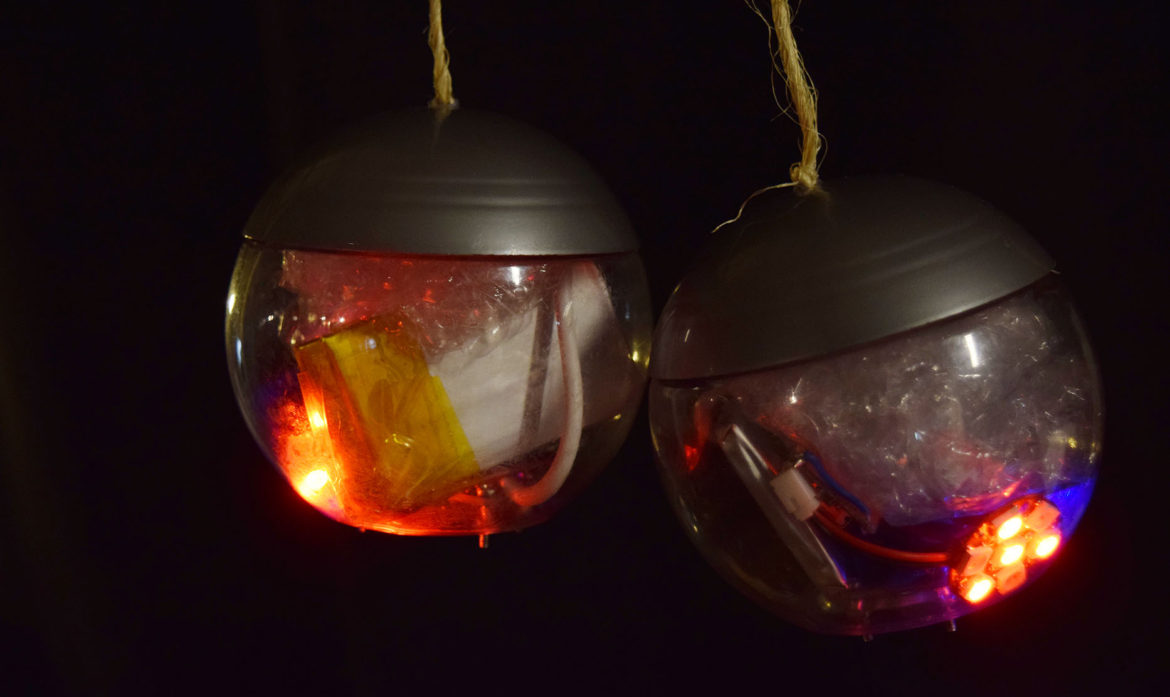Spacetime Poi is a final project at physical computing course with Tom Igoe at ITP.
Following the final project proposition, a 2nd post describing the work process, defining concept, figuring out electronic components and crafting a unique case.
Inspired by Fire
Prior to actually making the spacetime Poi, I’ve had the chance to user-test with a regular set of poi – a pair of balls on strings, which led to some helpful insights. One of the testers who’ve seen poi before in their natural habitat, asked “are you going to light them on fire?!”
“If everything goes according to plan, then no!” I answered, but the tester did give the idea of attempting to recreate the effects of spinning fire, using electronics.

I’ve spun fire, twice in my life. I did it after 1+year of practicing and after a fire safety class with NYPD certified fire technician and performer Tara Mc Manus at the Floasis in Brooklyn. Safety person with fire resistant kevlar sheet was assigned to watch me closely, ready for any coincidence.
The feeling was exhilarating and the experience was immersive like nothing else. The brightness of fire increases as the poi is spun faster, consuming more oxygen. The smell of fuel and the stereo sound of a fireball sizzling past my ears. The meditative state of my entire body and mind focusing on one single task: spinning those poi as if my life was depending on it. Because it actually did!
Even at these optimal conditions of maximal safety and professionalism, spinning two burning objects goes straight to the top 5 of dangers I’ve put myself into. Fortunately, I only burned off a few hairs, and decided without hesitation that this is a hobby I should do less often. Spacetime poi is a chance for me to try and recreate an electronic version of fire spinning.
Spacetime Poi is borrowing two main aspects from the experience of spinning live fire:
- An audiovisual immersive experience, that provides feedback on the user’s poi-spinning fluency. Succeeding to spin the poi in a constant rate enhances the light of each poi and changes its color in a way that imitates the rising temperature of fire. Hopefully, successful spinning will also activate an audiovisual generative art javascript app.
- The sense of danger! Spacetime Poi is mostly safe for adult users, but it is powered by a lithium battery – the kind that’s not allowed on planes! So beware… Spacetime Poi is not supposed to catch on fire, but for the the very small chance it might, play carefully 😉

Electronic Interface
Here are the electronic components used to achieve the described functionality:
- Two Adafruit 9-DOF Accel/Mag/Gyro to measure physical values about the poi’s movement
- Neopixel Jewel
- Two Lithium Ion Polymer Batteries – 3.7v 1200mAh,
- a charger
- Two adaptors 3.7v to 5v
- Two USB cables
- Two Wemos D1 mini – compact microcontrolers with wifi capabilities
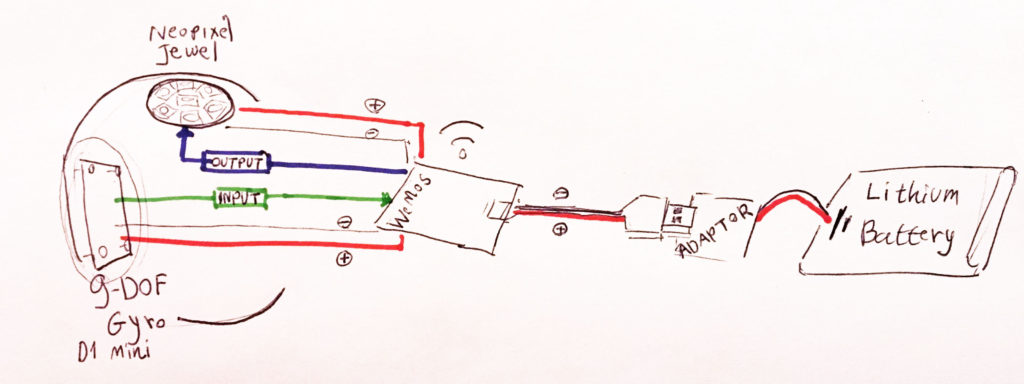

Stabilizing the gyroscope at the bottom of each poi, on the far side from it’s handle was crucial to achieve precise reading.
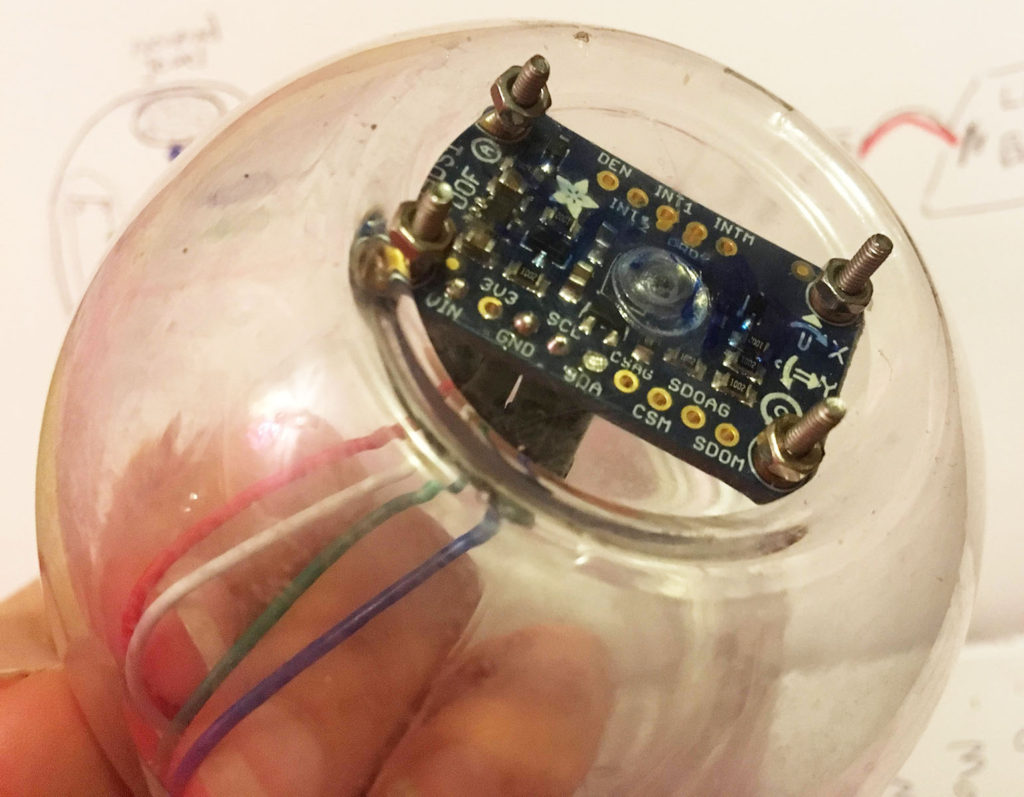
Initial measurements we’ve made showed that the acceleration on the z axis reaches a maximum (negative) value of -1.99 once the poi is spun in a reasonable constant speed. The Y and X axis measurements were less constant and predictable than that.
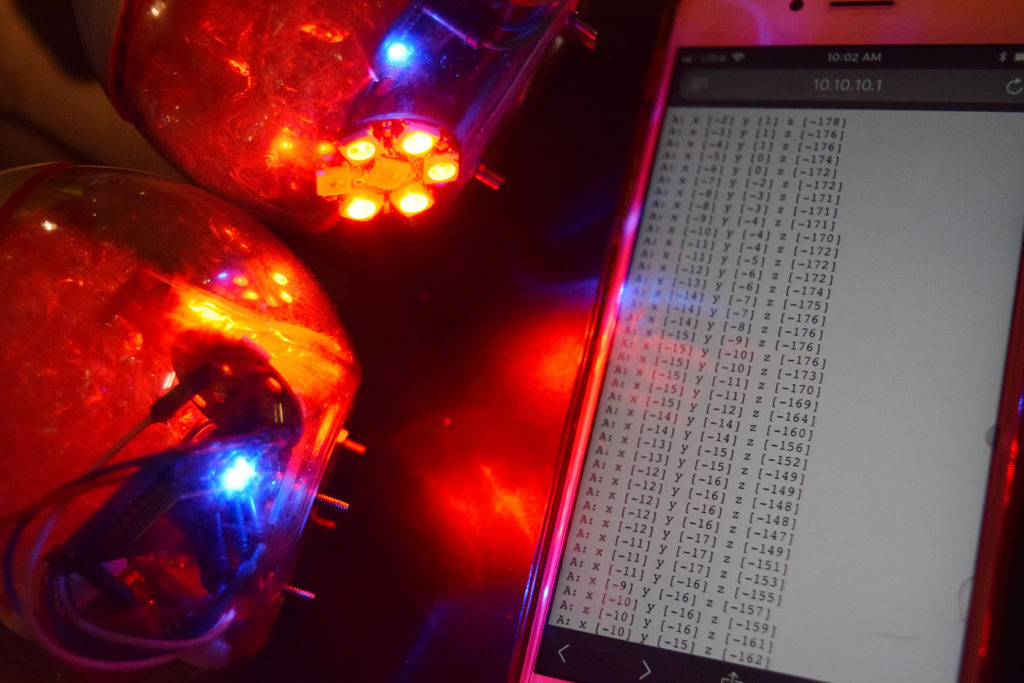
To match a visual output to these reading, we’ve assigned three modes to the LED ring, Static (imitating low temperature fire), Ignited and Flowing (imitating high temperature fire).
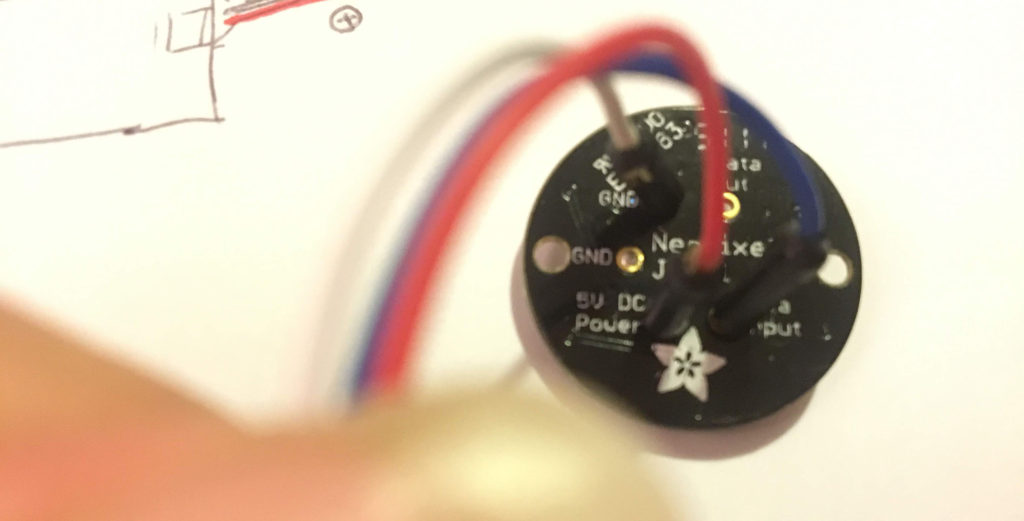
The microcontroler used as the brain of the operation is small, cheap, and casts it’s own wifi network from within a spinning poi.
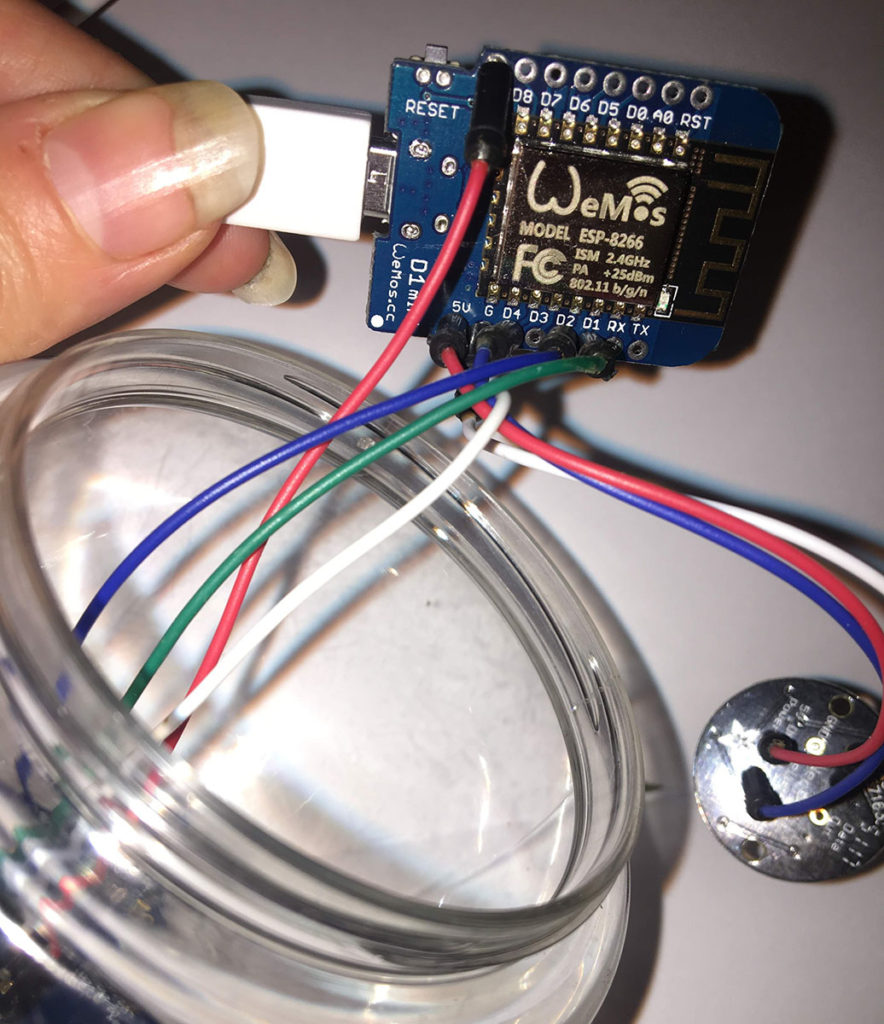
Currently only one of the poi is sending wifi signals, as it’s more tricky to log both of them onto the same wifi.
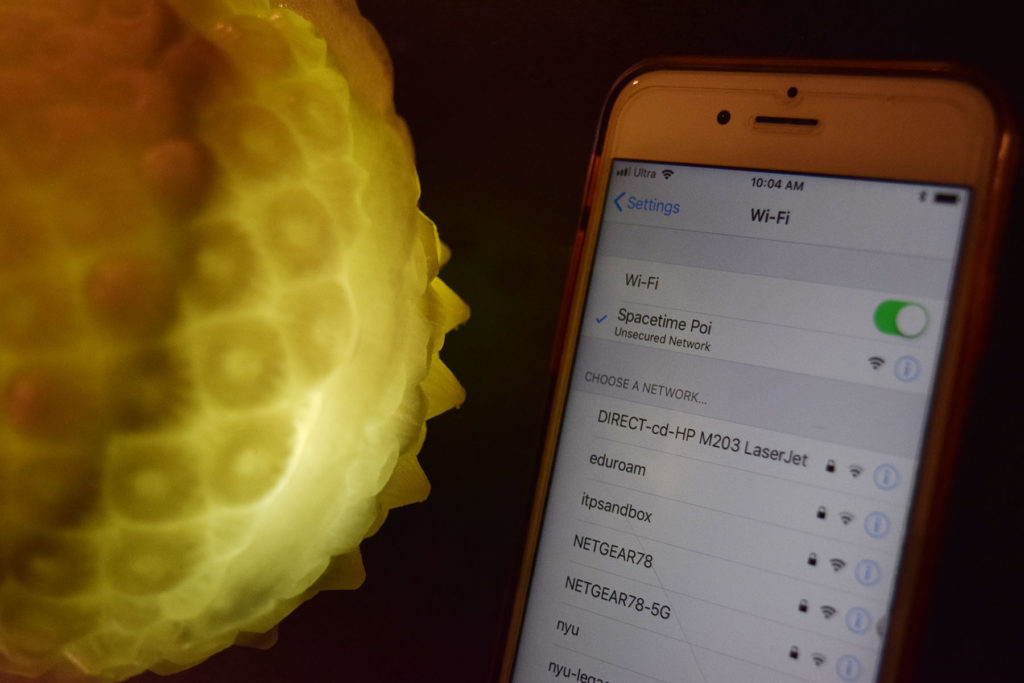
And this is the infamous lithium battery, powering the entire circuit through an adaptor and a short USB cable.
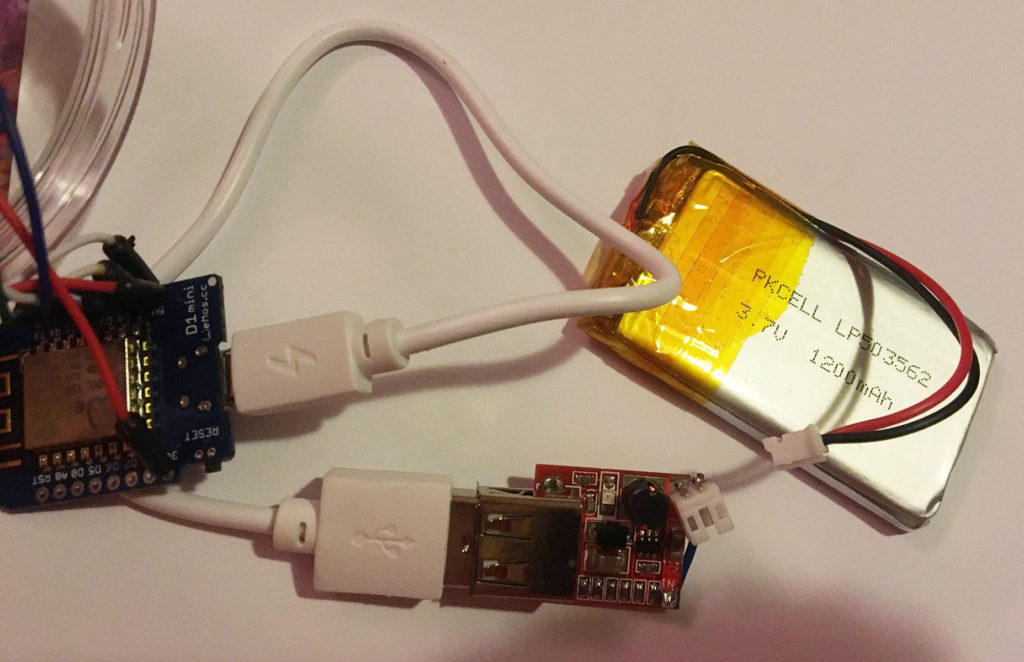
Code
A specific arduino code was crafted to measure the centripetal acceleration, applied to the Z axis of the accelerometer and change the light with it’s increase. To imitate the rising temperature of fire, the code defines 3 modes:
- Static: a reading of 0 on the Z axis generates a randomly blinking red light
- Ignited: medium readings generate light that shifts from orange to yellow
- Flowing: the maximum reading on the z axis (-1.99) generates light that’s shifting from blue and white
The flickering between orange and yellow and between blue and white, are actually controlled by readings from the x and y axis. Since the changes on these axis are less predictable, they produce a light pattern that is quite random – which is a significant feature helping imitate the quality of fire.
The wifi-related code was borrowed from one of Uriel Guy’s existing art projects we collaborated on in the past.
The arduino code for the poi is available to download here.
The relevant libraries are available to download here.
Voila! A set of two working poi.
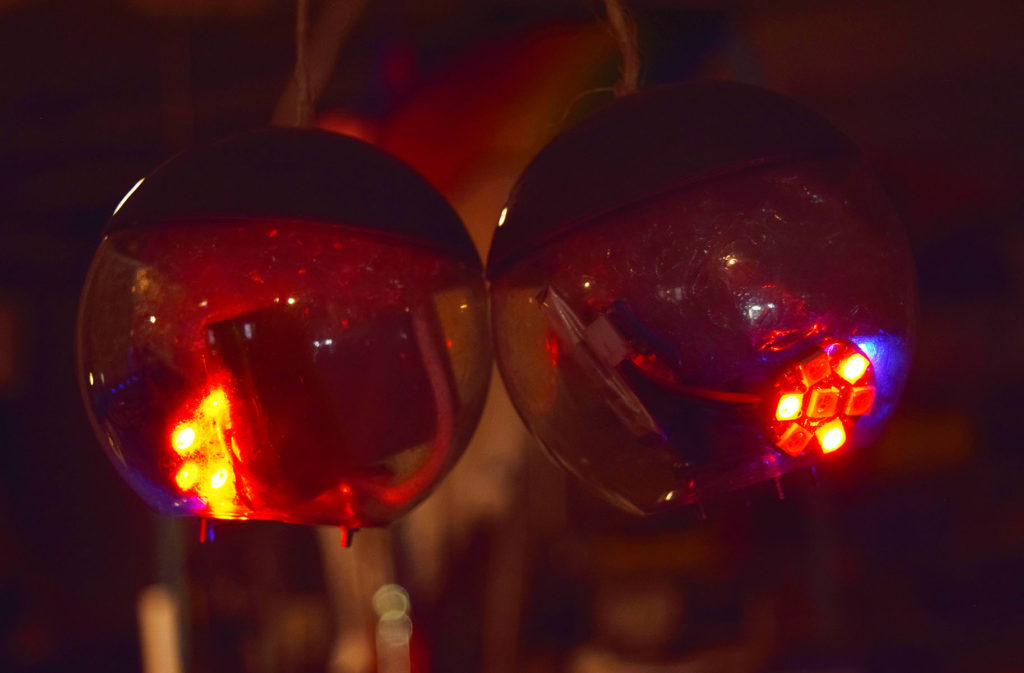
Unique Crafted Case
In the pursuit of an immersive, artful experience, I put special attention on crafting a case to contain the electronic components. This part of the process turned out to be longer and messier than anticipated. I ended up developing my skillset to the unexplored territories of 3d printing and molding.
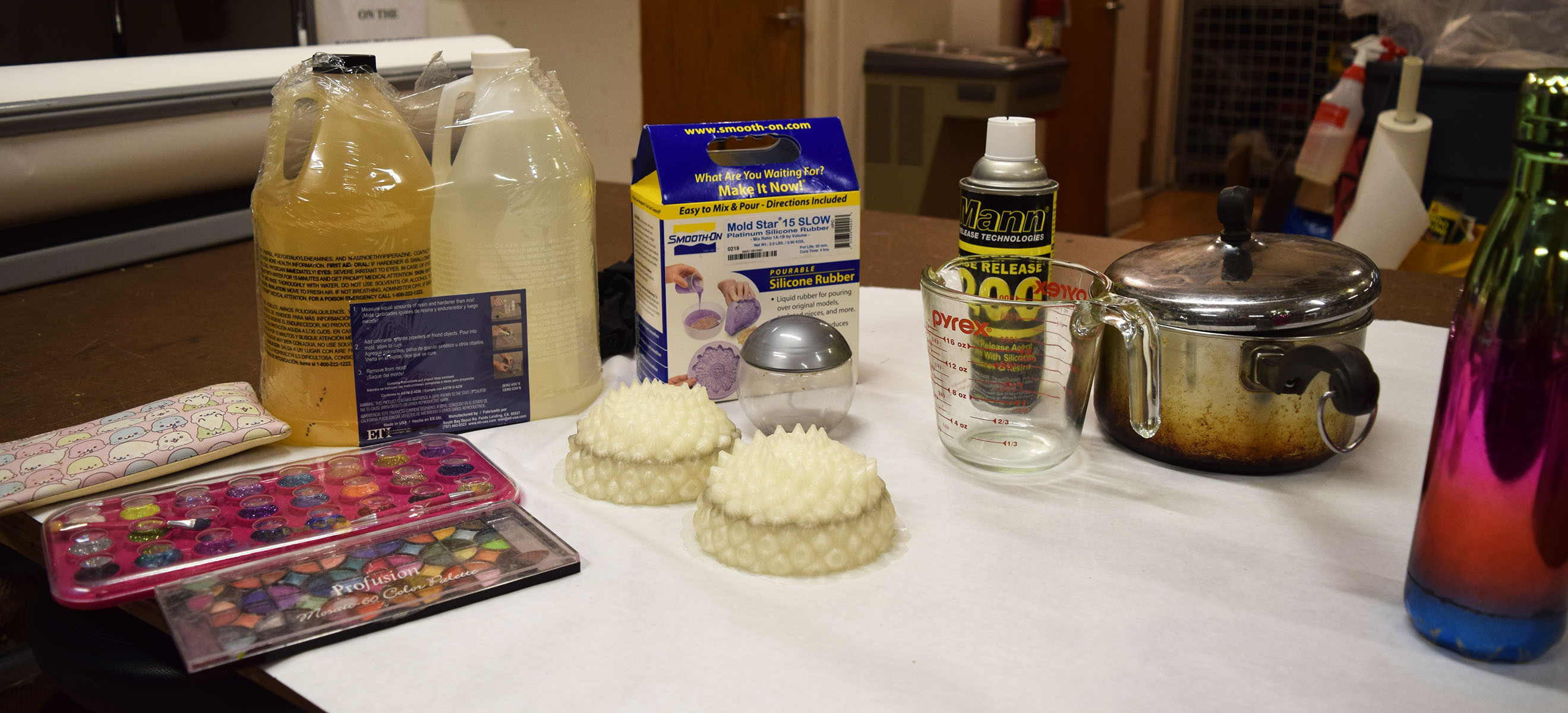
As you saw in previous images, each poi is built into a transparent, hard, ball-shaped twist-off plastic container. This practical container is being sold at a french bakery in my neighborhood, filled with some of the best tiramisu in New York City.
I’m attempting to enhance the admirable tiramisu cups with artful cases. Each case should protect the electronics (and the user!) from some of the impact. It needs to be transparent enough so the colorful flickering shines though, but opaque enough to conceal the mechanical components. And of course – it must look and feel extraordinary.
The chosen material was silicone. Soft and elastic, milky semi-transparent material. Will diffuse light beautifully.
The chosen shape is this twisted, fractal-like 3d sphere, downloaded from here.
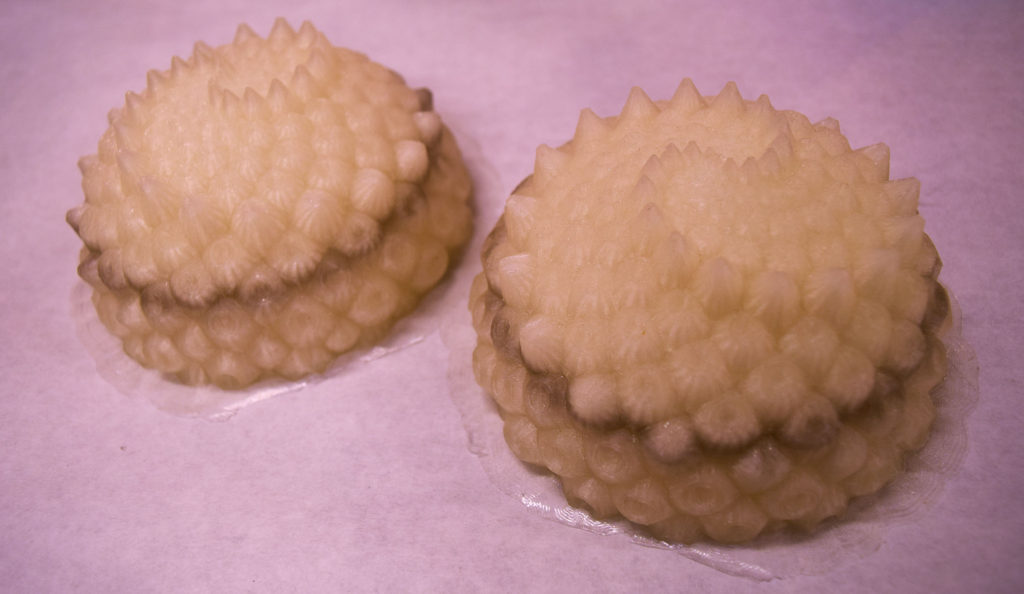
3D printing this shape in a size that can envelope the poi’s container (10cm in diameter) took ~30 hours. The process of transforming this shape to the chosen material was long, tricky, gooey and sticky.
Creating a mold out of these two halves took about 2-3 hours of making, 4+ hours of drying, and maybe 1 hour separating the sticky parts from each other without breaking anything.
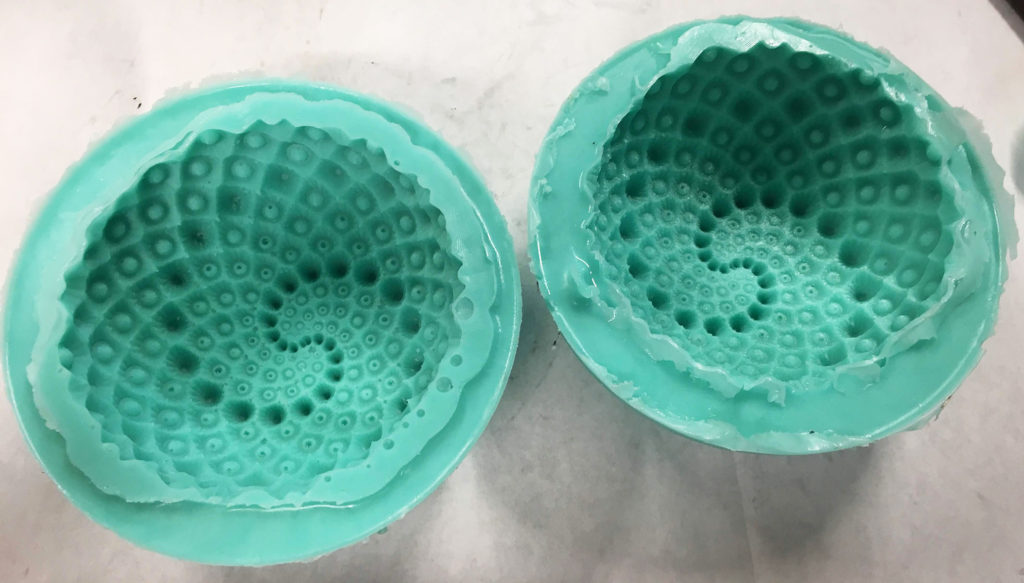
Then, pouring silicone into the mold, and letting it dry for 7+hours – also including a tiramisu ball, to have a ball-shaped hole inside it. Doing the process twice – once for each half of the cases.
Spacetime Poi in action
The next objectives of the Spacetime Poi are to put everything together, and to hopefully plug the wifi transmission from within the poi into a generative art javascript sketch. Stay tuned!

